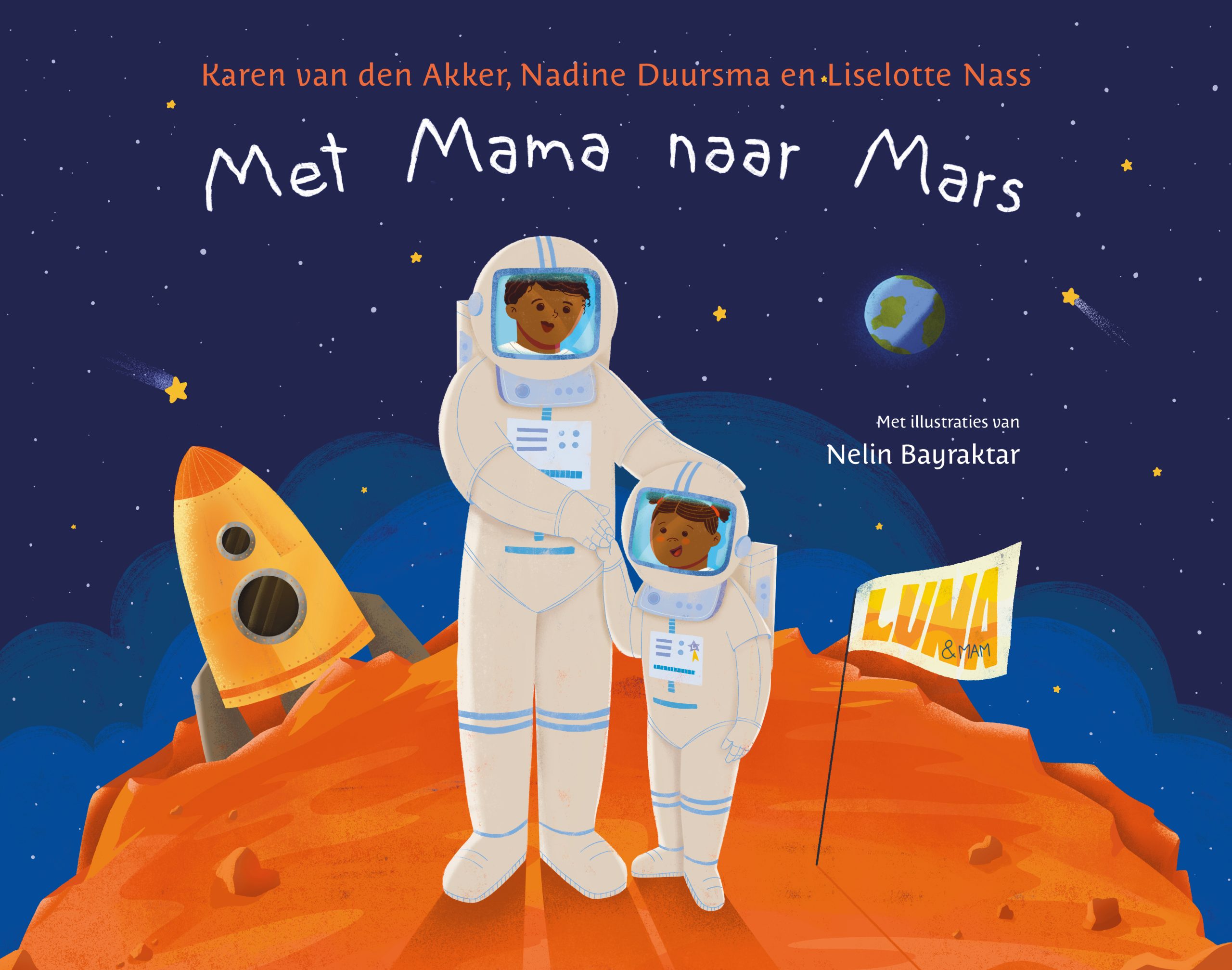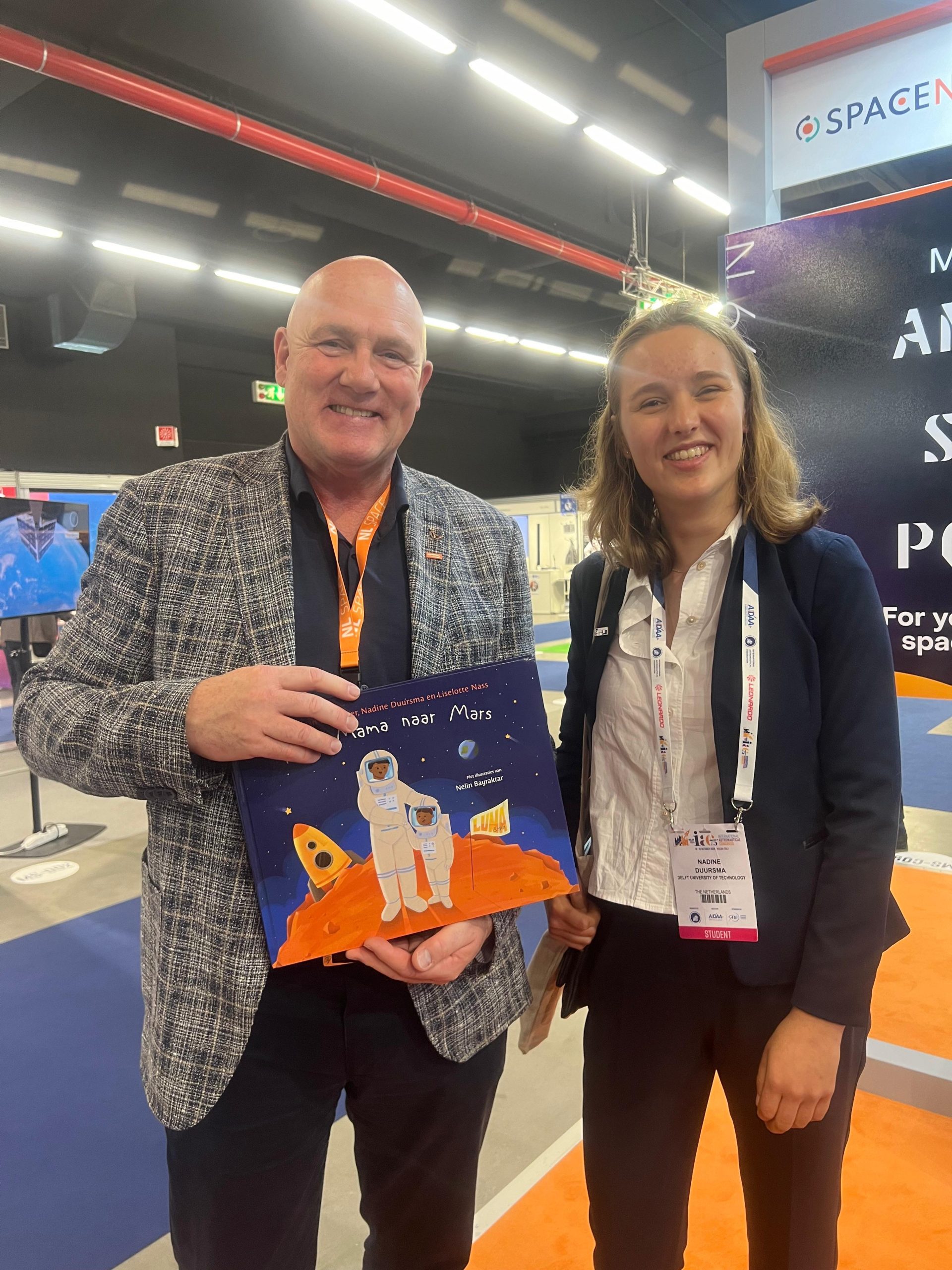She wrote a children’s book to get girls excited about technology. But that is not the only thing that this ambitious master’s student has up her sleeve. She designed an artificial eye for blind people, which won her a national award, co-built a satellite, and is working on an energy generating aircraft wing. Nadine Duursma’s big dream is to become an astronaut.
Nadine Duursma wrote the children's book ‘With Mama to Mars’. (Photo: Sam Rentmeester)
How did you get the idea to write a children’s book?
“I co-wrote it with two friends with whom I did an ASML Scholarship, which is a grant for technical master students. We had to do something in return for ASML, and the assignment was to attract more attention for technology among young people. We decided to write a children’s book about space and it is called Met Mama naar Mars (with Mum to Mars -ed.). The idea was to print it and to read it aloud to primary school children. But when we sent the manuscript to 10 publishers, one of them wanted to publish it immediately. Two years later and our book is now available in stores and online.”
What is the book about?
“The storyline is a girl who travels to Mars with her mother. But their rocket breaks down and they get help from several female scientists to solve the problem. They are based on real female pioneers, such as the physicist Marie Curie and the mathematician Katherine Johnson.”

Why did you write a children’s book on this subject?
“It is important that there are books about space for girls too. The three of us missed this when we were younger. I grew up with Lego and enjoyed Discovery Channel much more than Barbie dolls. When I started on my Aerospace Engineering bachelor in 2017, only 8% of the students were female. This has now changed.”
Yet, fewer girls than boys still choose technical subjects. Why do you think this is the case?
“I think that it is still partly related to how we view certain fields. When I was choosing a course, I first looked at medicine as everyone around me was really keen on it. But I soon realised that it involved a lot of reading, and that is not my thing. During an open day, I walked through the Faculty of Aerospace Engineering and I thought that all the aircraft and rockets were so cool. Even as a child I found that sort of thing interesting, but had never seriously considered going into the field myself – that was not really what was expected of girls or women.”
Perhaps an odd question, but why should there be girls in technology? What is the added value?
“I think it is a real shame that a lot of girls may enjoy a technical study without even realising it themselves. For me, it is important that everyone can do what they enjoy without being judged by society. On top of that, it’s also good to not be the only woman in a group of 10 men.”
You have just returned from an international aerospace conference in Milan. What were you doing there?
“I did a programme at the International Space University in Houston last summer and I knew a lot of people from the programme who were also going. It was great. I gave my book to astronaut André Kuipers and talked to flight directors and other astronauts too. There was also a presentation from Lunar Gateway – a project that I worked on in Houston. This is a space station that will rotate around the moon. It will take off into space in around 2026 and will ultimately replace the ISS international space station.”

You have just turned 25 and have already done so much. You have designed an artificial eye for blind people, built a satellite, won a grant as a first year student, did a minor at Princeton, and you are working on an energy generating aircraft wing.
“The artificial eye was for my secondary school research project. My aunt is almost blind and I wondered why hearing impaired people have hearing aids while blind people remain blind. I researched various technologies, brain implants, and cameras, and combined these technologies into an artificial eye. To my great surprise I won the national KNAW (Royal Netherlands Academy of Arts and Sciences -ed.) Education Award. This was very special to me, as every year was on the edge of dropping out secondary school while failing most language and history courses. I nearly failed my final exams too because of Dutch and English, but got a 10 for mathematics. But this did not compensate the other subjects.”
What are you doing now?
“I am doing a double master’s in Robotics and Space Engineering. I will soon start the last leg at the Phi-Lab, a European Space Agency (ESA) earth observation location in Frascati, Italy.”
Do you already know what you will do after your studies?
“I have lots of exciting ideas. I may work at ESA, or back at Andøya Space in the Arctic where I did my internship. Or I would like to be a flight controller monitoring the ISS. Or I might work on the new robot arm for the Lunar Gateway. I would also be interested in helping clean up space debris or making robots that can explore Mars.”
Would you want to go into space yourself?
“If I get the chance, absolutely. Becoming an astronaut is my biggest dream. You can qualify with various backgrounds. You need three years of work experience, to speak a few languages, and it helps if you do a sport or have an adventurous hobby. The most important thing is to do what you enjoy doing and become really good at it. This raises your chance of getting through the selection process. I do athletics, have done climbing and cycle a lot. And next year I am going to run a marathon. So I’m working on it seriously.”
How realistic is your dream?
“I think that all my dreams for after my studies are achievable, but I am putting the bar high because I want to be an astronaut. This goal motivates me to get the most out of myself. And even if it does not work out, I would have had a purposeful and exciting life.”
- Met Mama naar Mars, Karen van den Akker, Nadine Duursma, Liselotte Nass, bound, NL, 2021, 1st print, ISBN 9789090382463.
Do you have a question or comment about this article?
k.wijnands@tudelft.nl


Comments are closed.